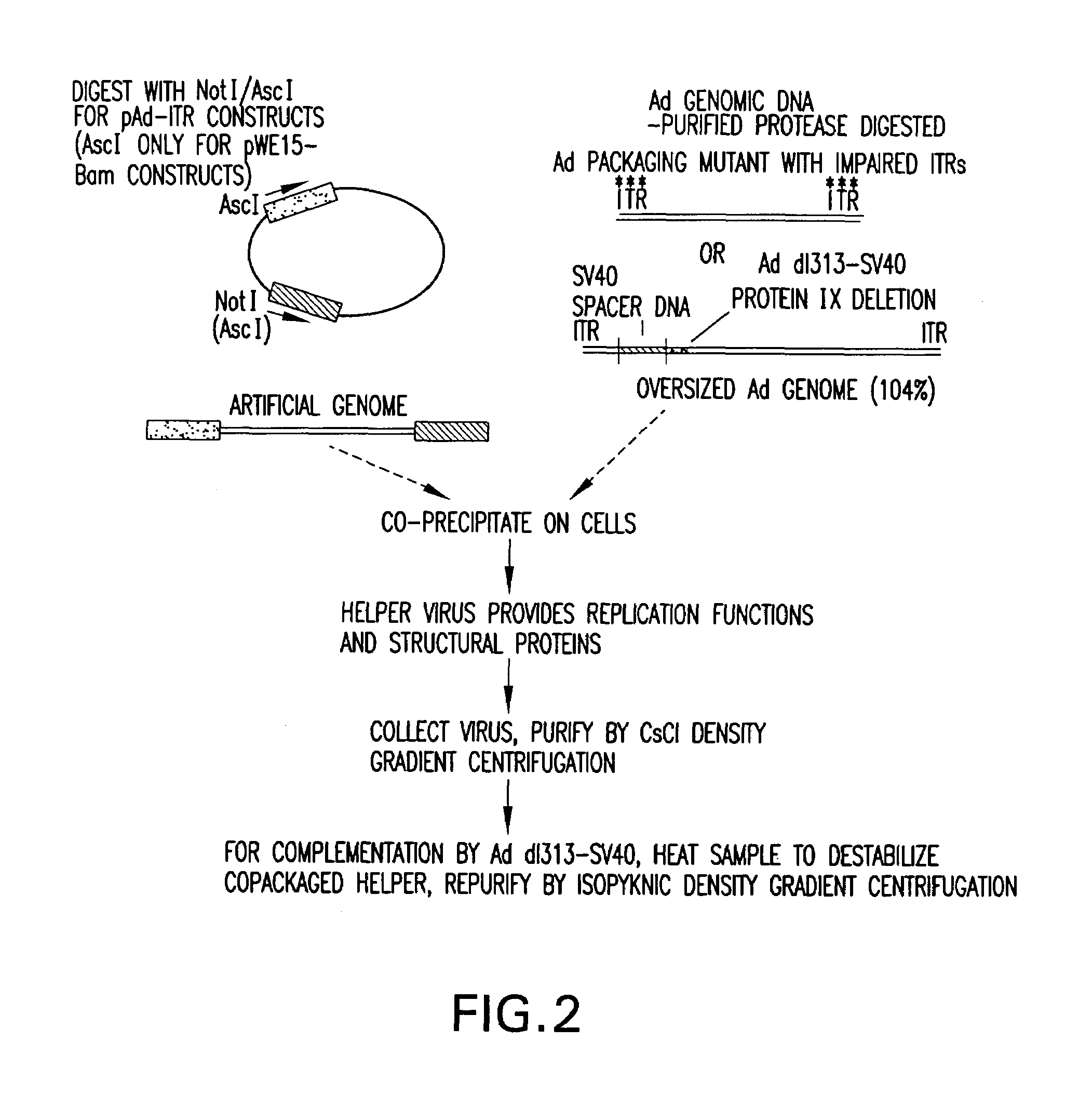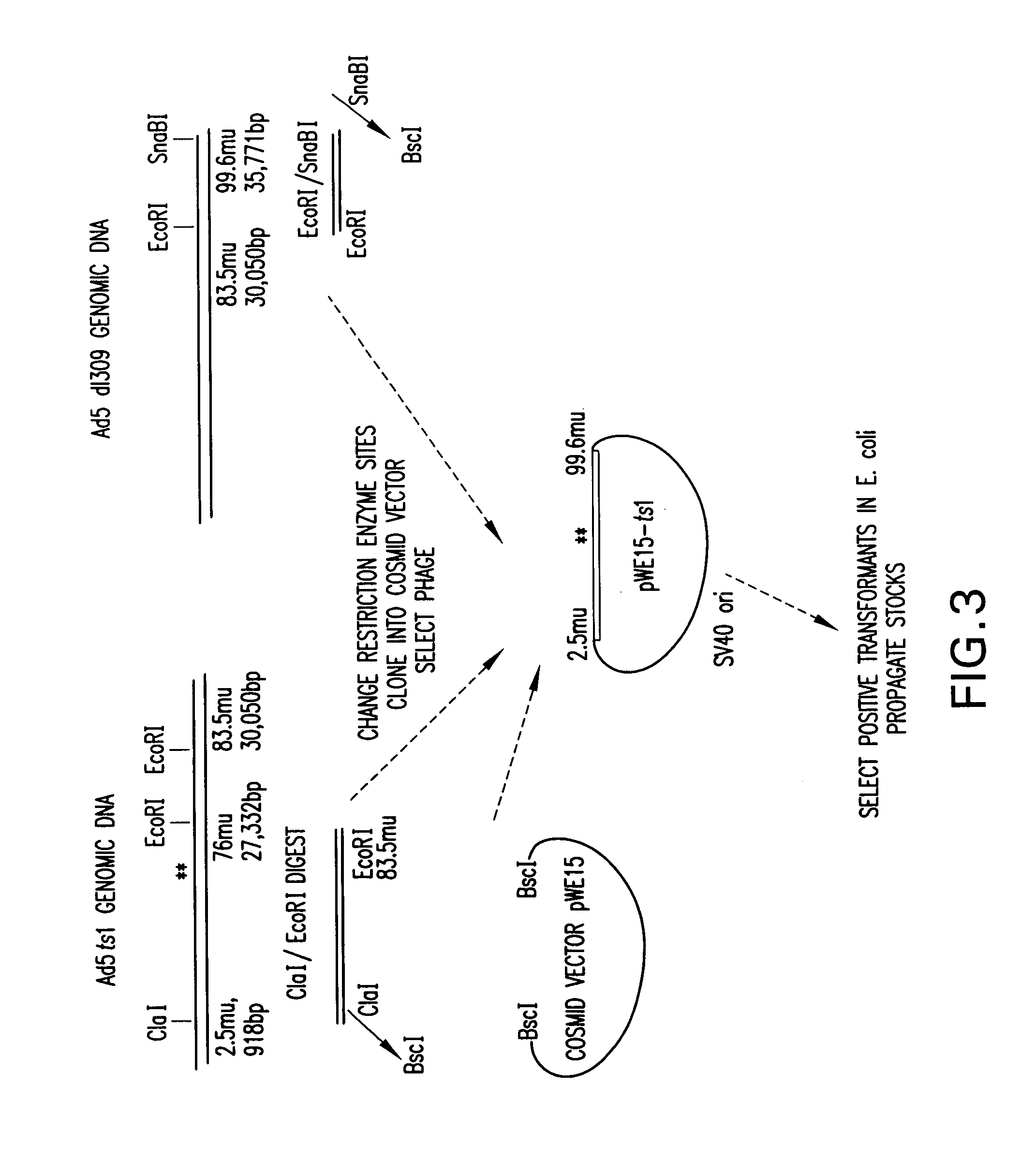Recombinant adenoviral vector system
a technology of adenoviral vectors and adenoviral cells, applied in the direction of viruses/bacteriophages, genetic material ingredients, dsdna viruses, etc., can solve the problems of inability to carry out in vivo gene therapy applications, inability to transfer genetic material stable, and unpredictable success, so as to minimize the loss of cell viability and minimize the effect of contamination
- Summary
- Abstract
- Description
- Claims
- Application Information
AI Technical Summary
Benefits of technology
Problems solved by technology
Method used
Image
Examples
Embodiment Construction
[0024]The present invention relates to a method for producing stocks of recombinant adenovirus and is directed towards producing a viral vector system that is efficient and safe relative to other viral vector systems currently used. The method of the invention utilizes a two component system comprising (i) a recombinant adenovirus vector which contains heterologous DNA sequences of interest and cis-acting sequences (e.g., viral ITR sequences or functionally, equivalent sequences) required for replication and packaging of said vectors (hereinafter referred to as the “artificial genome”); and (ii) trans-acting viral functions necessary for replication and encapsidation of the recombinant vector.
[0025]The artificial genomes of the invention contain the minimum cis-acting sequences necessary for replication and packaging of the recombinant DNA thereby permitting the insertion of large fragments of DNA of interest (˜15 to >30 Kb) while retaining the ability to be efficiently packaged. In...
PUM
| Property | Measurement | Unit |
|---|---|---|
| Digital information | aaaaa | aaaaa |
| Digital information | aaaaa | aaaaa |
| Temperature | aaaaa | aaaaa |
Abstract
Description
Claims
Application Information
 Login to View More
Login to View More - R&D
- Intellectual Property
- Life Sciences
- Materials
- Tech Scout
- Unparalleled Data Quality
- Higher Quality Content
- 60% Fewer Hallucinations
Browse by: Latest US Patents, China's latest patents, Technical Efficacy Thesaurus, Application Domain, Technology Topic, Popular Technical Reports.
© 2025 PatSnap. All rights reserved.Legal|Privacy policy|Modern Slavery Act Transparency Statement|Sitemap|About US| Contact US: help@patsnap.com



